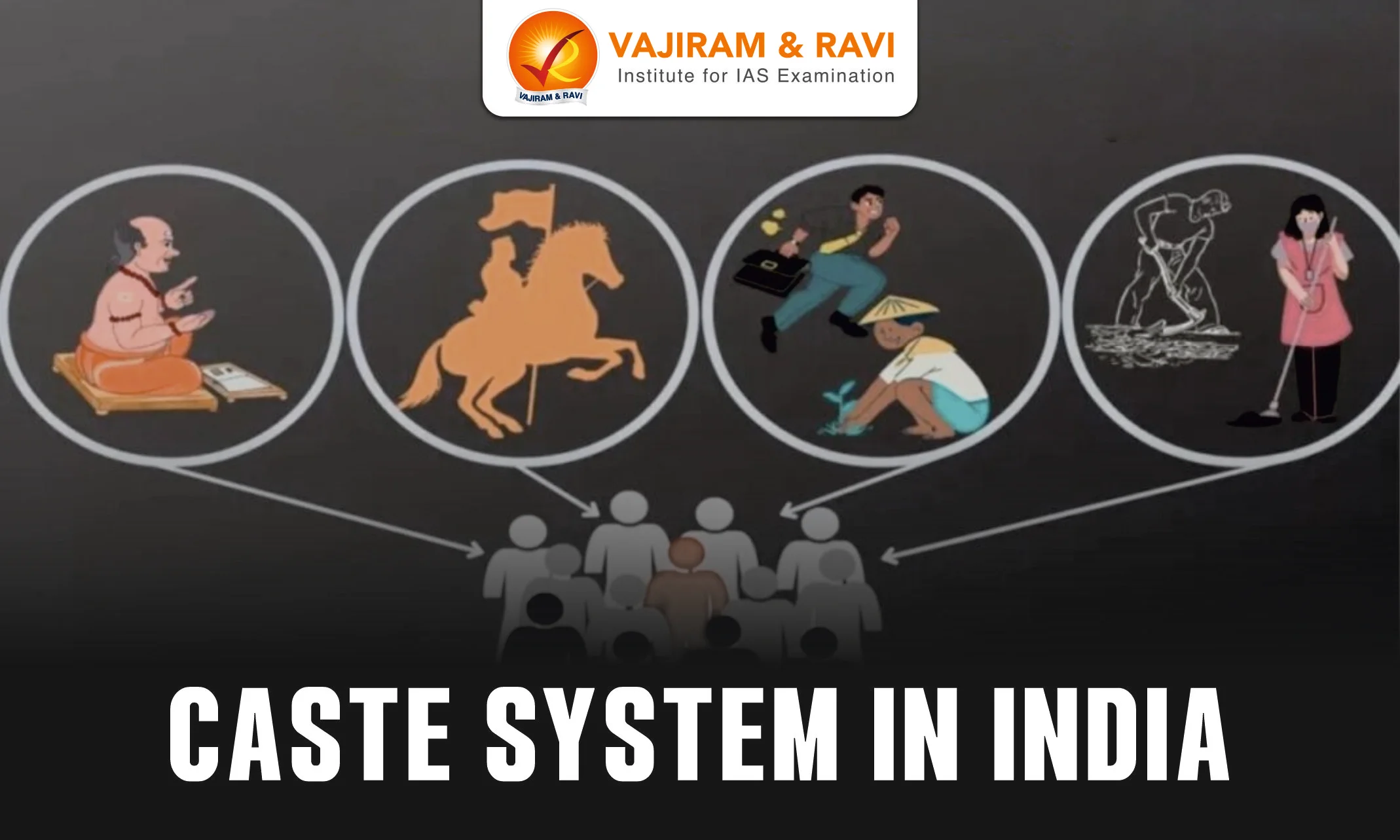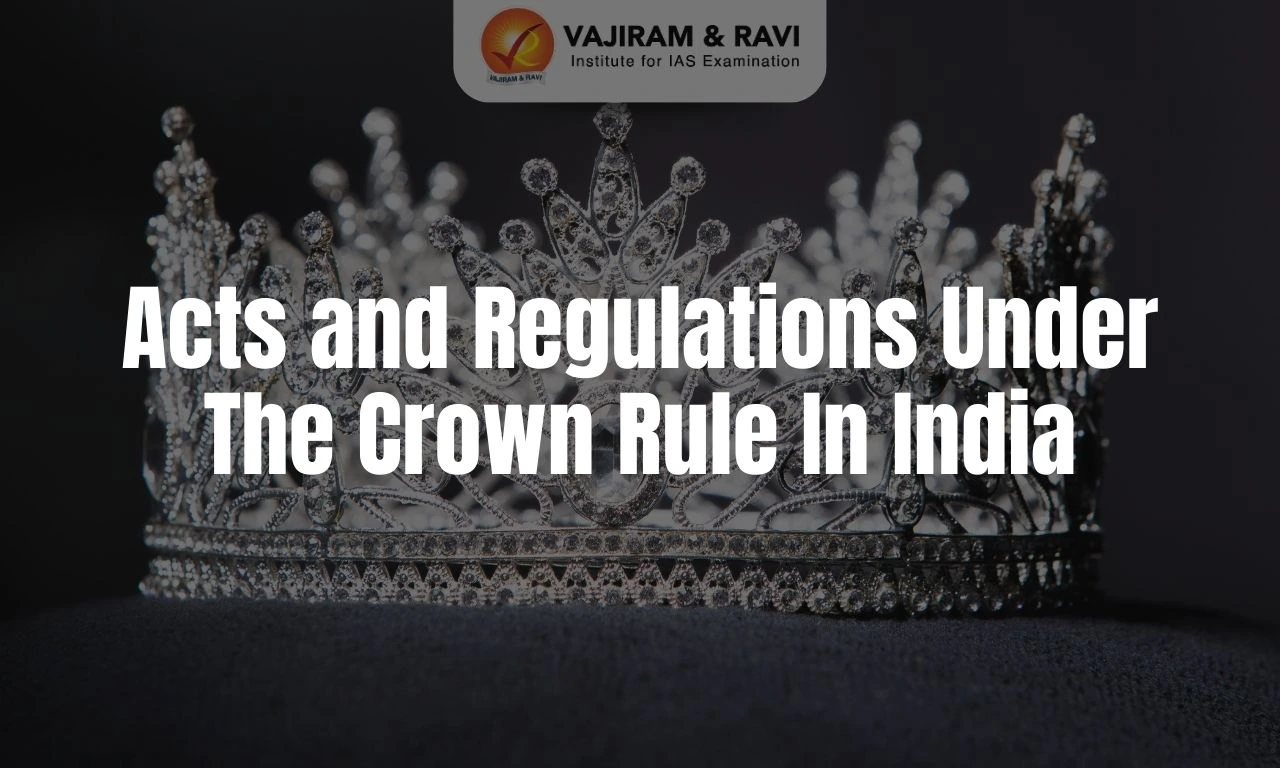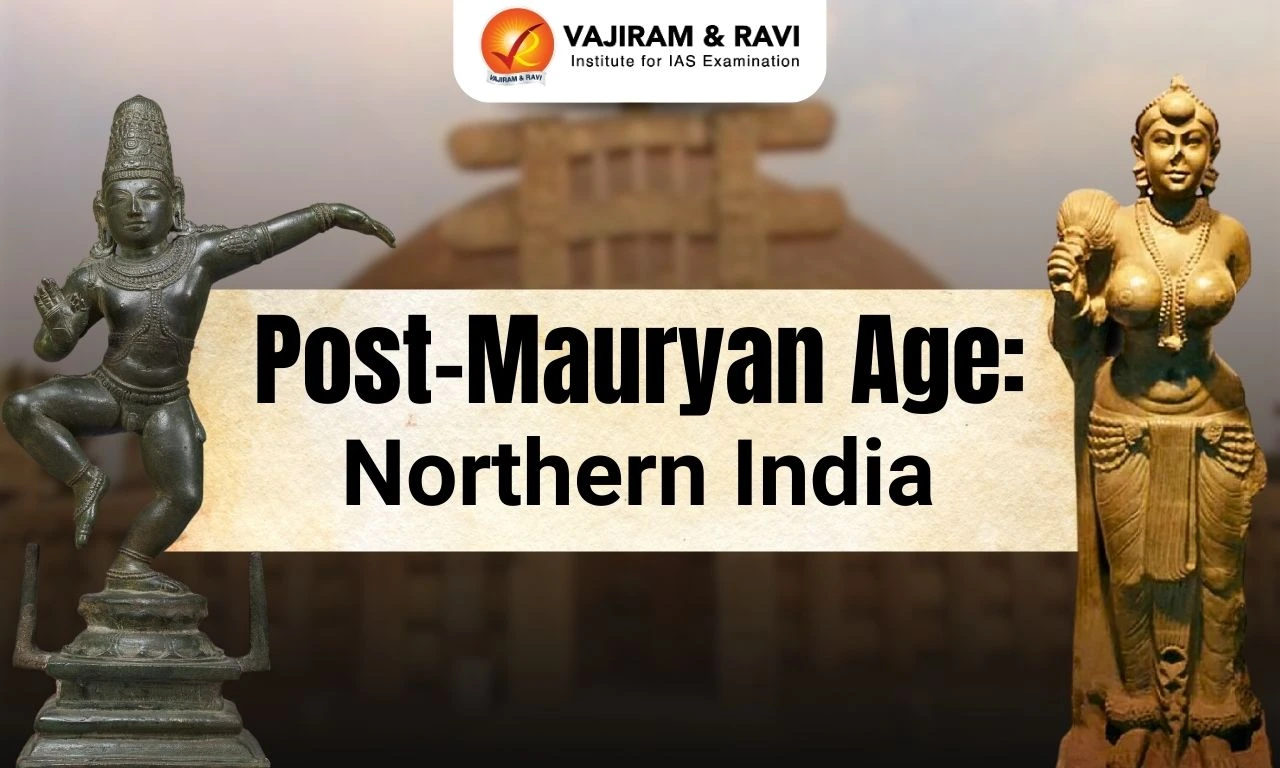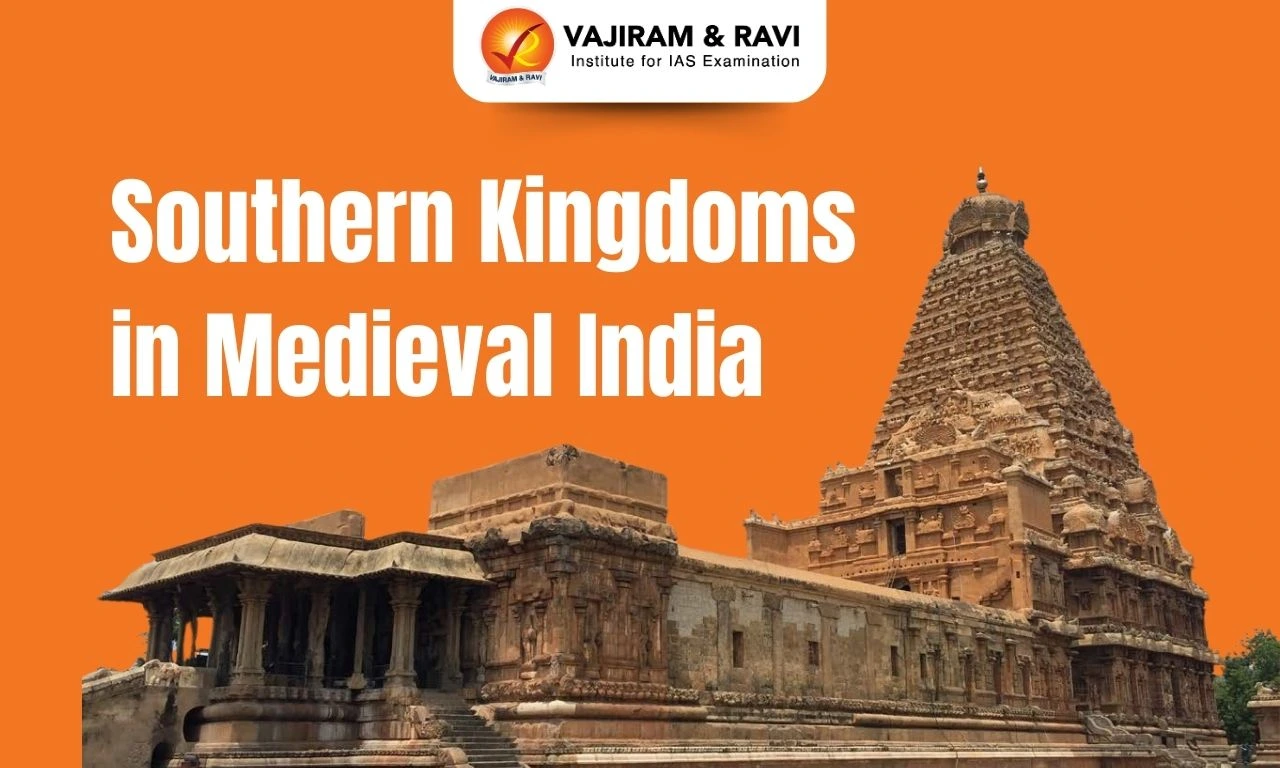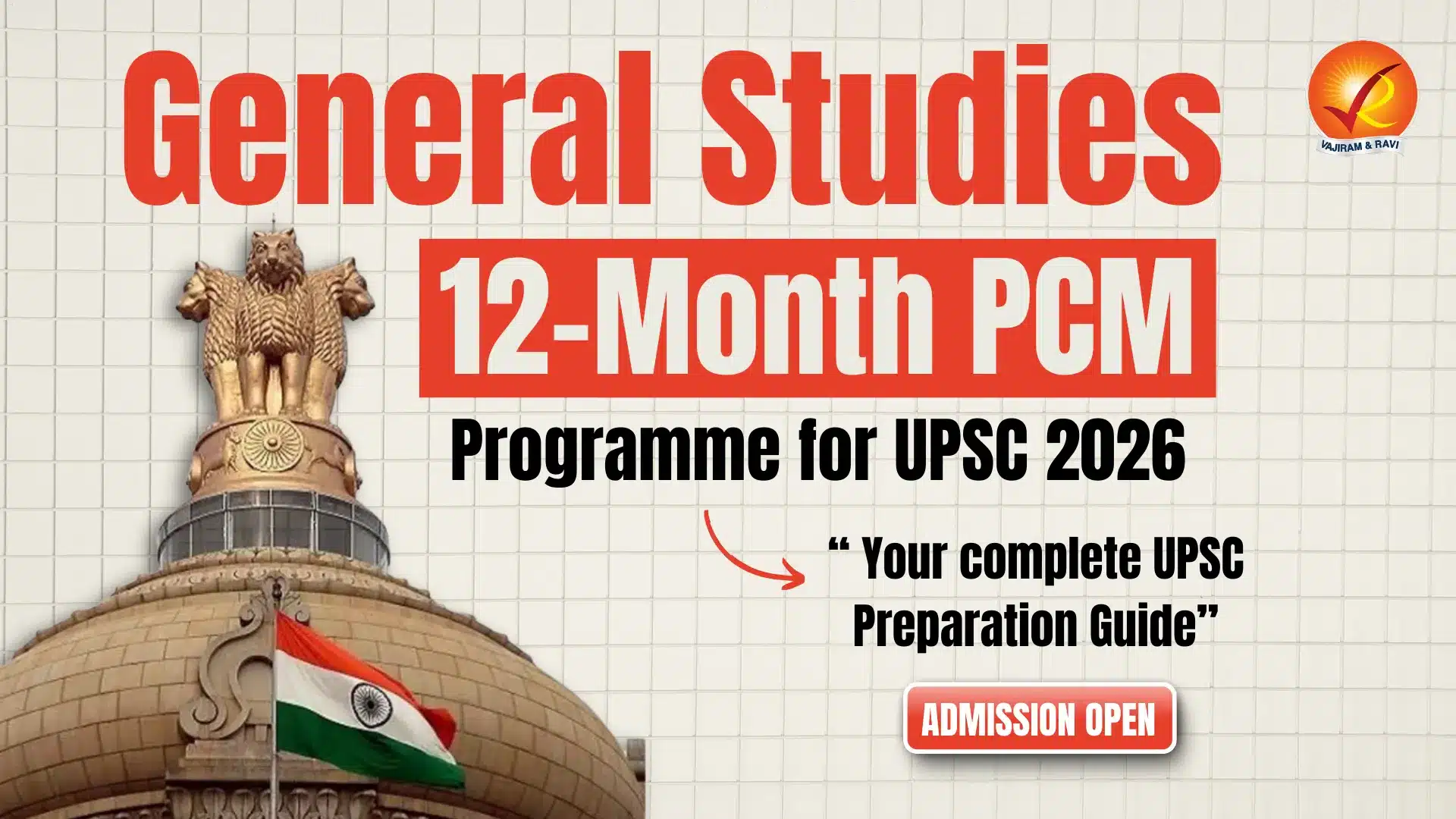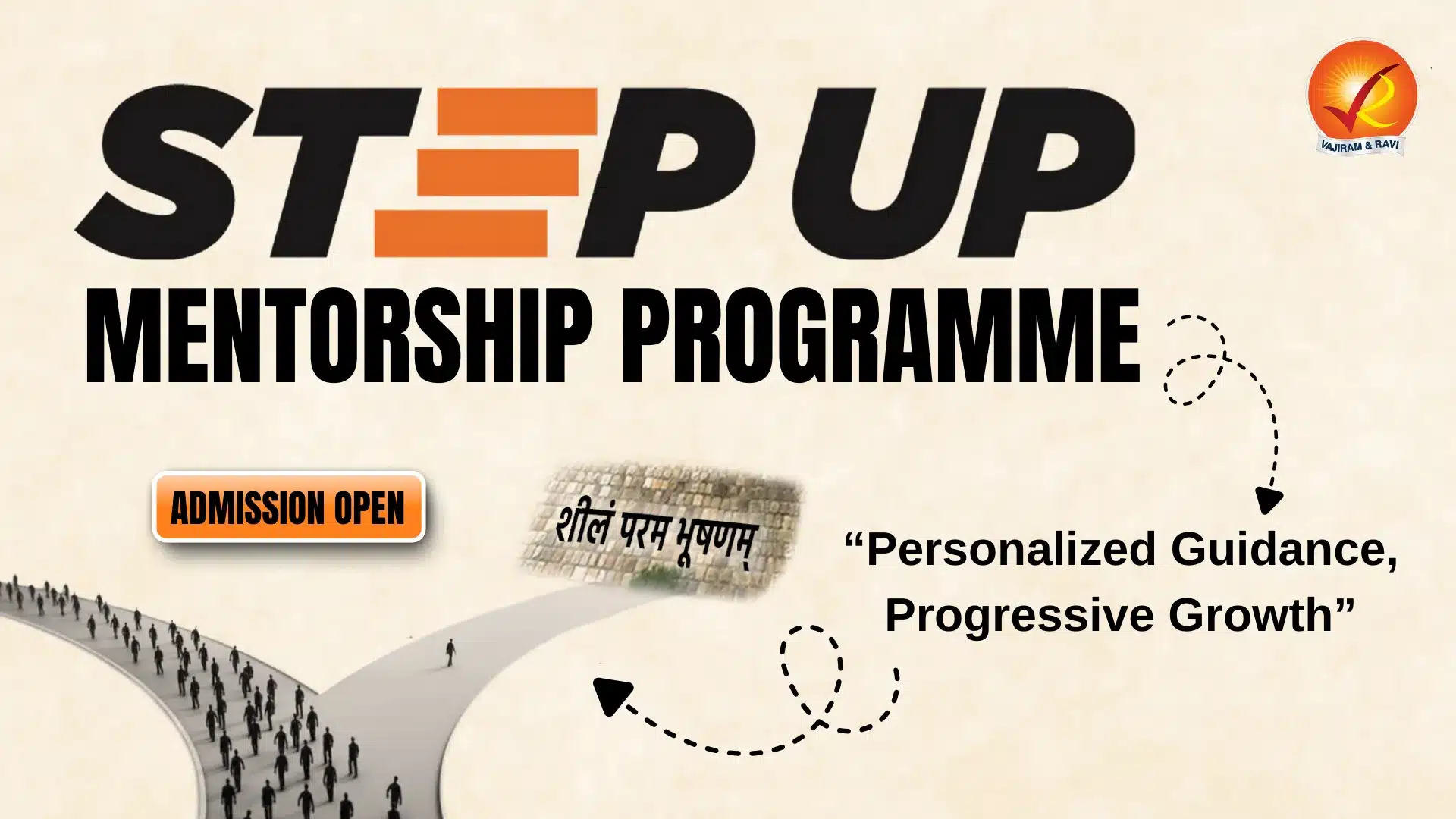What is caste?
- Caste can be defined as a hereditary, endogamous group having a common name, common traditional occupation, and common culture, relatively rigid in matters of mobility, the distinctiveness of status, and forming a single homogeneous community.
- The caste system is a social hierarchy in India originally based on a person's occupation and birth. It divides society into different groups called castes, which are further subdivided into subcastes.
- The four varna - Brahmana, Kshatriya, Vaishya, and Shudra are the classical four divisions of Hindu society. In practice, however, there have always been many subdivisions (Jatis) of these varnas, which today connote castes (Jatis) in India.
What are the main features of the caste system?
- Segmentary division of Society: Indian society is primarily divided into different castes. Caste membership is determined by birth and not by accomplishments.
- Hierarchy: Castes have a specific scheme of social and ritual hierarchy. A sense of high and low, superiority and inferiority, is associated with this gradation or ranking.
- Restrictions on feeding and social interaction: There are restrictions on the kind of food that can be eaten together, received, or exchanged among castes.
- The ideology of purity and pollution: The ideology of purity and pollution regulates the interaction between different castes significantly.
- Restrictions on Endogamy: Endogamy or marriage within one’s own caste or sub-caste is an essential feature of the caste system.
- Rules governing caste system: There is a prescribed set of norms, values, and sanctions that govern social behavior within a caste.
- Restricted choice of occupation: Traditionally, each caste was associated with an occupation.
- For example: The Brahmins who occupied the uppermost rank were prescribed the duties of acquiring and teaching sacred knowledge and performing sacrifices, while lower castes, such as Dalits, were historically restricted to jobs such as manual labour.
What are the factors that contribute to the changes in the caste system?
Several factors have contributed to changes in the caste system in India over time, which are as follows
- Sanskritisation:
- It is a process by which any low caste could adapt to the behavior pattern, culture of the high caste and claim membership in that high caste.
- As lower castes adopt the customs and practices of higher castes, they may be accepted and respected by members of higher castes, which can help to reduce discrimination and social stigma.
- Westernization: Western-style education has led to a greater emphasis on merit and individual achievement than traditional caste-based roles and hierarchies.
- As people adopt western-style clothing, food, and other cultural practices, they may also adopt new ideas and values.
- Modernisation: It includes establishing scientific, technological, and educational institutions, the rise of nationalism, and new political culture and leadership in the country, which lead to job creation, thereby breaking the occupational rigidity of the caste system.
- Industrialisation and Urbanisation:
- Industrial growth and expansion of urban space have provided new sources of livelihood to people and made occupational mobility possible.
- Taboos against food sharing started weakening when industrial workers from different castes lived and worked together.
- Political and Economic Reforms:
- Various political and economic reforms were initiated after Independence in the country, which led to several changes after Independence.
- The Indian government has implemented policies such as reservations in education and government jobs for individuals from lower castes to address historical discrimination and provide equal opportunities.
Why is caste-based discrimination continuing even in the present times?
Despite various efforts, discrimination and prejudice continue to be prevalent. The following are the reasons:
- Lack of enforcement and implementation of laws and policies to address this issue. Additionally, caste-based discrimination is often subtle, making it difficult to detect and address.
- Lack of awareness about the caste system and its impacts on individuals, which can make it difficult for individuals to recognize and challenge discrimination.
- Poverty and lack of education can exacerbate the problem, as individuals from lower castes may have limited opportunities and be more vulnerable to discrimination.
- Many people continue to hold caste-based biases and prejudices, which leads to caste-based discrimination.
What are the new identities of the caste system in modern times?
The caste system in India has undergone significant changes in modern times, and new identities have emerged that reflect these changes. A few new identities of the caste system are as follows
- Caste in governance and politics: Certain castes have been provided reservation in government jobs and political representation.
- Caste system in business: Certain castes dominate certain industries and control access to resources and opportunities.
- Caste association: Formal organizations often encompass several endogamous castes or jatis of a similar name, occupation, and rank.
- Demand for reservations: Various communities across India, including the Jats in Haryana, the Marathas in Maharashtra, and the Kapus in Andhra Pradesh, have demands for reservations in the form of quotas in education and employment.
| Casteization of politics | Politicization of caste |
|
|
|
|
|
|
|
|
What are the constitutional and legal provisions to eradicate caste-based discrimination?
Constitutional provisions
| Articles | Provisions |
| Article 14 | Equality before law |
| Article 15 | Prohibition of discrimination on the grounds of religion, race, caste, sex, or place of birth. |
| Article 16(2) | No citizen shall on grounds only of religion, race, caste, sex, descent, place of birth, residence or any of them, be ineligible for any employment or office under the State. |
| Article 17 | Abolish the practice of untouchability and made it a criminal offense. |
| Article 23 | Prohibition of traffic in human beings and forced labour. |
| Article 46 | Promotion of educational and economic interests of Scheduled Castes, Scheduled Tribes, and other weaker sections. |
| Article 51A | It shall be the duty of every citizen of India to promote harmony and the spirit of common brotherhood amongst all the people of India. |
| Article 330 | Reservation of seats for Scheduled Castes and Scheduled Tribes in the House of the People |
| Article 332 | Reservation of seats for the Scheduled Castes and the Scheduled Tribes in the Legislative Assemblies of the States. |
| Article 338 | National Commission for the Scheduled Castes. |
| Article 338 A | National Commission for the Scheduled Tribes. |
| Article 338 B | National Commission for Backward Classes. |
| Article 341 | The President specifies the castes, races or tribes or parts of or groups within castes, races, or tribes be deemed Scheduled Castes in relation to that State. |
Legal provisions
- The Protection of Civil Rights Act, 1955: To prescribe punishment for preaching and practice of untouchability for the enforcement of any disability arising therefrom and for matters connected therewith.
- The Scheduled Caste and Scheduled Tribe (Prevention of Atrocities) Act, 1989: To prevent the offenses of atrocities against the members of the Scheduled Castes and the Scheduled Tribes.
- The Prohibition of Employment as Manual Scavengers and their Rehabilitation act, 2013: To provide for the prohibition of employment as manual scavengers, rehabilitation of manual scavengers and their families, and for matters connected therewith.
What steps can be taken to placate the ill effects of the caste system?
These are steps that can be taken to placate the ill effects of the caste system:
- Spread of Education: Caste feelings should be discouraged in educational institutions, and the students should be taught to resist these feelings whether they experience them in daily social interactions.
- Proper implementation of the law: Ensure strict implementation of the Atrocities Act as regards victims of violent abuse and other atrocities.
- Each police station should have a scheduled caste/scheduled tribe atrocities cell to handle investigations of abuses and alleged violations of the Atrocities Act.
- Economic empowerment: Economic empowerment can help those who have been marginalized due to their caste by providing them with opportunities to improve their economic status.
- Public awareness campaigns: Public awareness campaigns can help raise awareness about caste-based discrimination. These campaigns should promote social harmony, a message that everyone is equal, regardless of their caste or social status.
Last updated on December, 2025
→ Check out the latest UPSC Syllabus 2026 here.
→ Join Vajiram & Ravi’s Interview Guidance Programme for expert help to crack your final UPSC stage.
→ UPSC Mains Result 2025 is now out.
→ UPSC Notification 2026 is scheduled to be released on January 14, 2026.
→ UPSC Calendar 2026 is released on 15th May, 2025.
→ The UPSC Vacancy 2025 were released 1129, out of which 979 were for UPSC CSE and remaining 150 are for UPSC IFoS.
→ UPSC Prelims 2026 will be conducted on 24th May, 2026 & UPSC Mains 2026 will be conducted on 21st August 2026.
→ The UPSC Selection Process is of 3 stages-Prelims, Mains and Interview.
→ UPSC Result 2024 is released with latest UPSC Marksheet 2024. Check Now!
→ UPSC Prelims Result 2025 is out now for the CSE held on 25 May 2025.
→ UPSC Toppers List 2024 is released now. Shakti Dubey is UPSC AIR 1 2024 Topper.
→ UPSC Prelims Question Paper 2025 and Unofficial Prelims Answer Key 2025 are available now.
→ UPSC Mains Question Paper 2025 is out for Essay, GS 1, 2, 3 & GS 4.
→ UPSC Mains Indian Language Question Paper 2025 is now out.
→ UPSC Mains Optional Question Paper 2025 is now out.
→ Also check Best IAS Coaching in Delhi
Caste System in India FAQs
Q1. What is the history of the Indian caste system? +
Q2. How many castes are there in India?+
Tags: caste system in India quest



